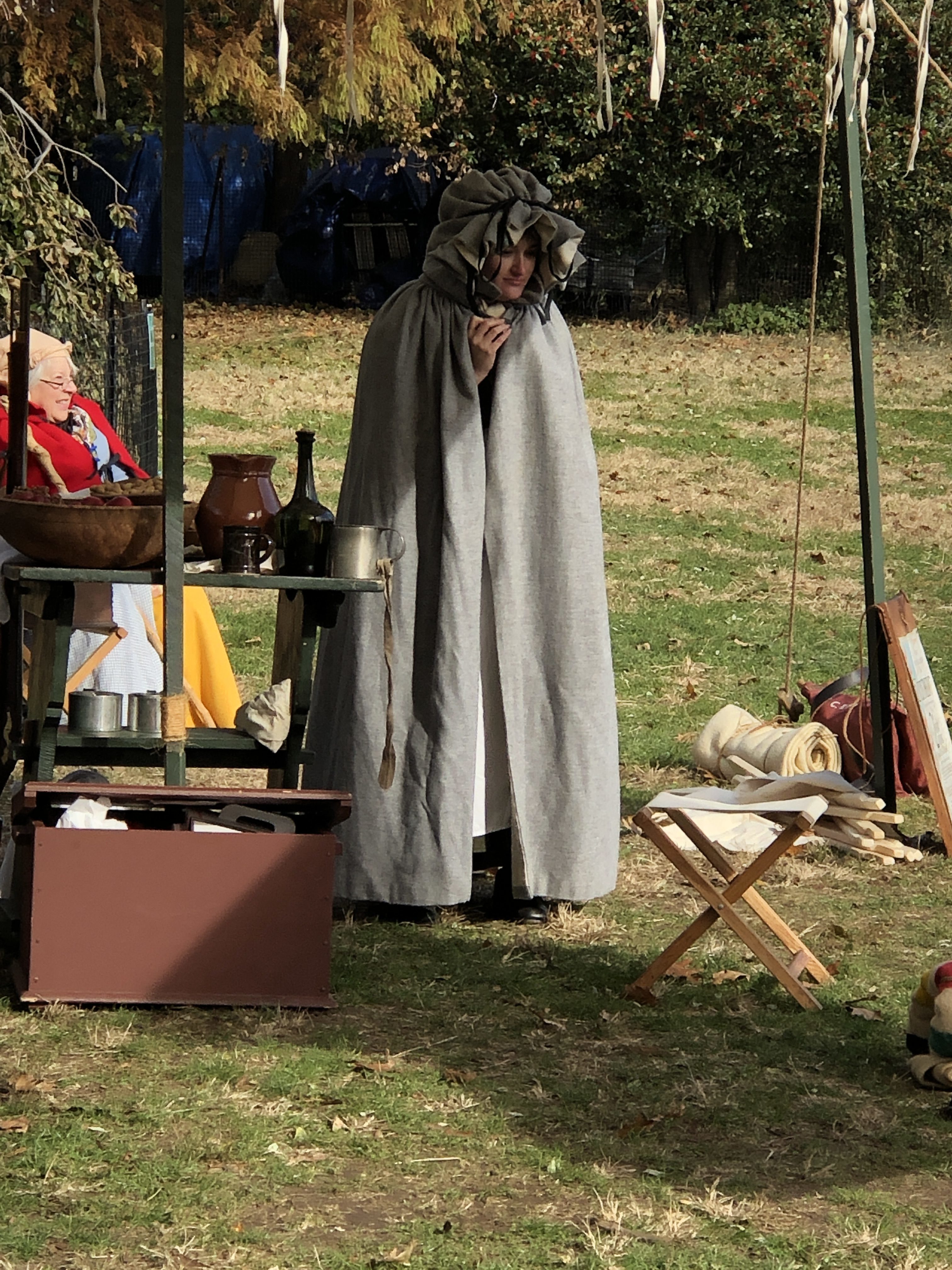I live near Fort Tryon Park in New York City, site of the Battle of Fort Washington, one of several important battles fought by the retreating Continental Army during the American Revolutionary War.
The park is near the top of a sizable hill in the area, and the lawn where the re-enacting took place is just below the redoubts where Margaret Corbin took her husband’s place in battle after his injury, continuing the canon fire against the oncoming Hessian and British troops. She was badly wounded, but survived.
I was able to briefly attend a re-enactment of the battle, an event held annually in the park. It was, as our local parks administrator put it, a low-key affair. A small tent formed the “headquarters” for the re-enactors. There was one fellow dressed as George Washington himself, and perhaps half a dozen Americans dressed in non-uniform “uniforms”, just as the actual Continental Army was.
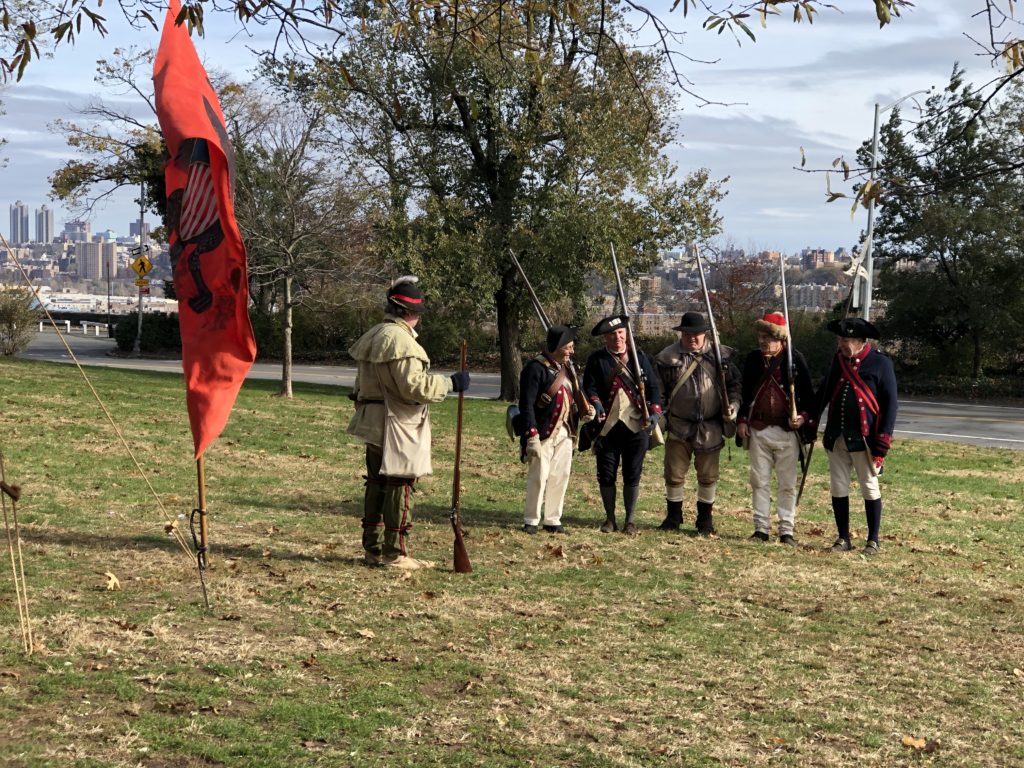
About three redcoats showed up, mostly from New Jersey; according to one, Monmouth County has a sizable number of re-enactors. Driving over the George Washington Bridge (ironically) and its $15 toll was the greatest deterrent to British invasion.
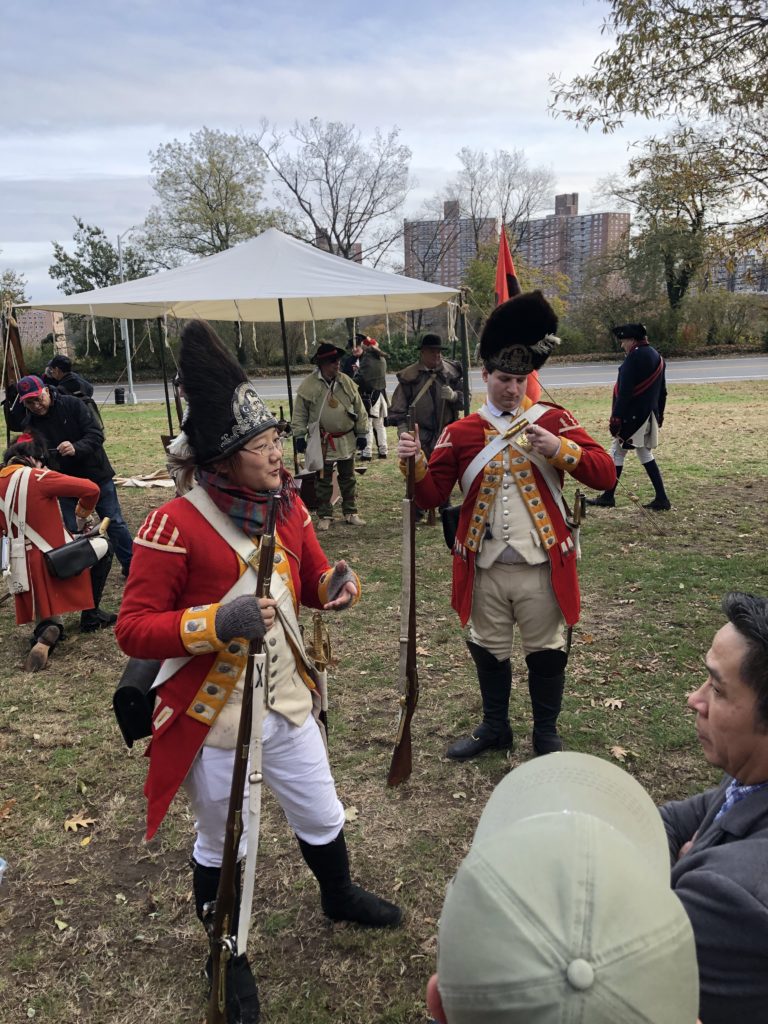
Several amateur historians had laid out tables with printouts of articles and biographies they’d written. It was a bit windy, and cold; fortunately the New Leaf cafe in the park provided complimentary hot cider and small pastries. There were also laminated reprints of old newspaper articles about the re-enactment; one that I read dated back over a century.
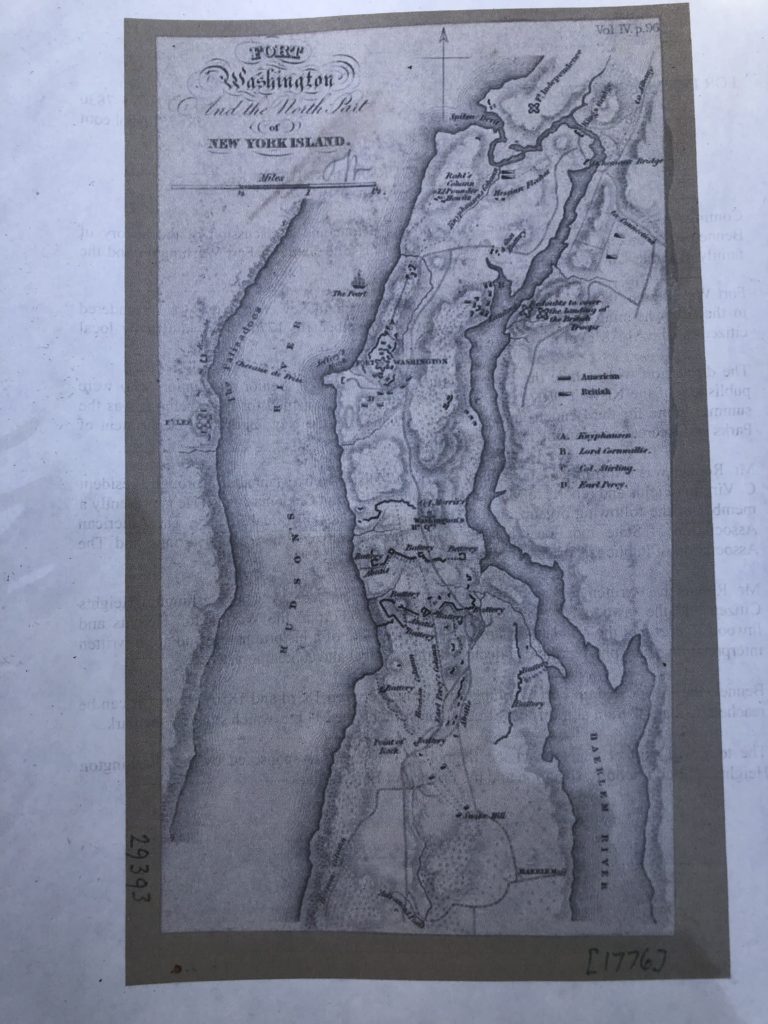
One woman dressed in period garb led fifteen-minute “tours” of Margaret Corbin’s life. The main road through the park is named for her (Margaret Corbin Drive), and she’s something of a local hero: troubled childhood, married young, and followed her husband, who served as a cannon loader in the Continental Army. In the battle, as he fell injured, she took his place, and was later captured, but released to care for the inform, while many of her fellow soldiers were sent to languish in British prison ships in the East River.
I waited and waited for the battle to start; even the re-enactors were unclear as to when; I suspect they were waiting for a sizable crowd. Loudspeakers were set up playing Colonial-era fife & drum music; children played happily with stick-and-hoop sets, which looked remarkably more fun than is commonly expected in the modern era of franchise toys and mobile device games.
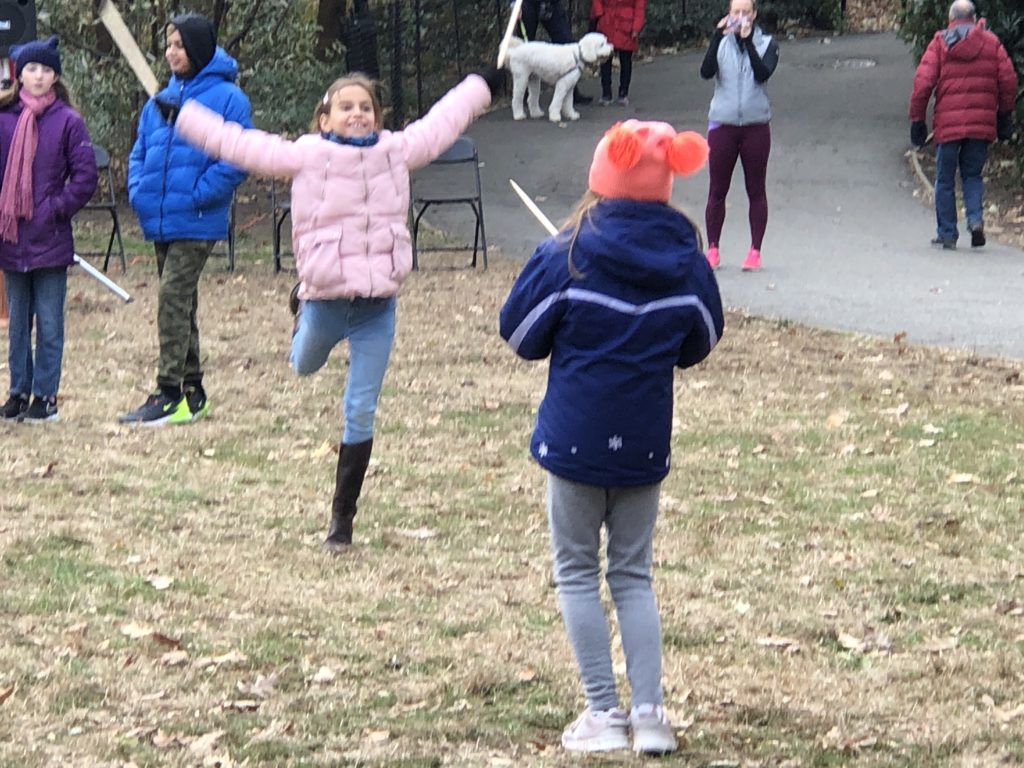
I spoke with a couple of the re-enactors, both on the British side. One was a woman who not only clearly loved the history behind the uniforms and gear, but was also very good at explaining it all, to children and adults alike. I asked her about the tall, pointed fur hats they wore, and she said basically, they were meant to make the already tall, robust assault troops known as Grenadiers look even taller and more robust.
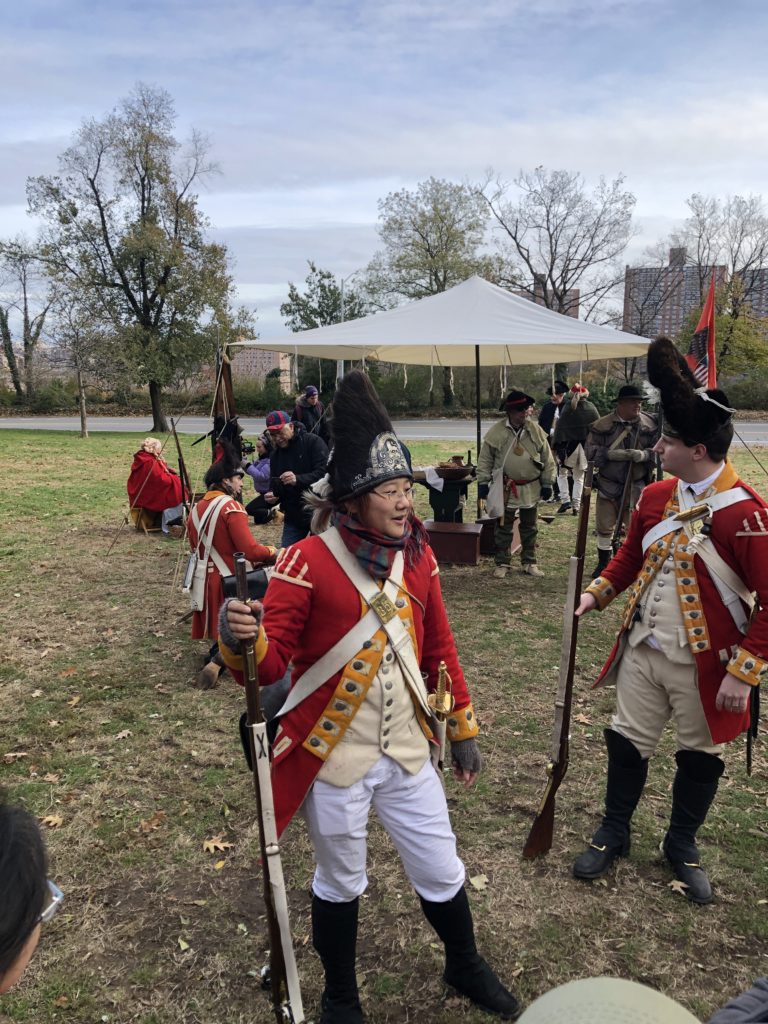
A fellow re-enactor said he’d been at this for eighteen years, and later, seemed to take the role of commanding the other two troops as they walked in parade drills.
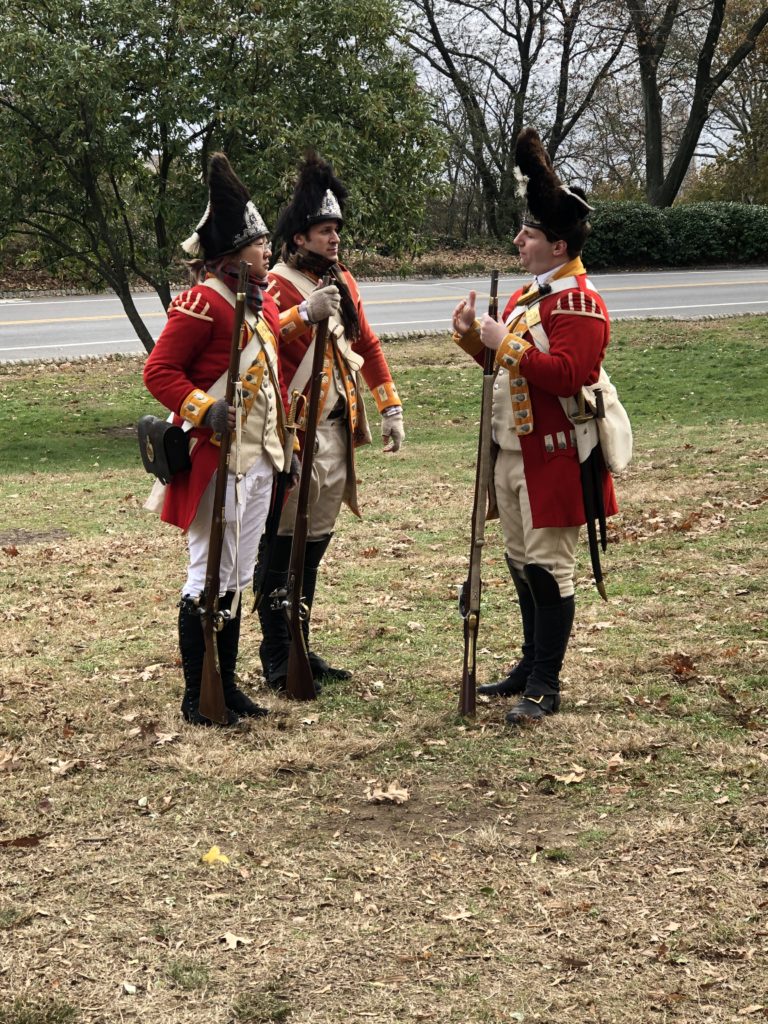
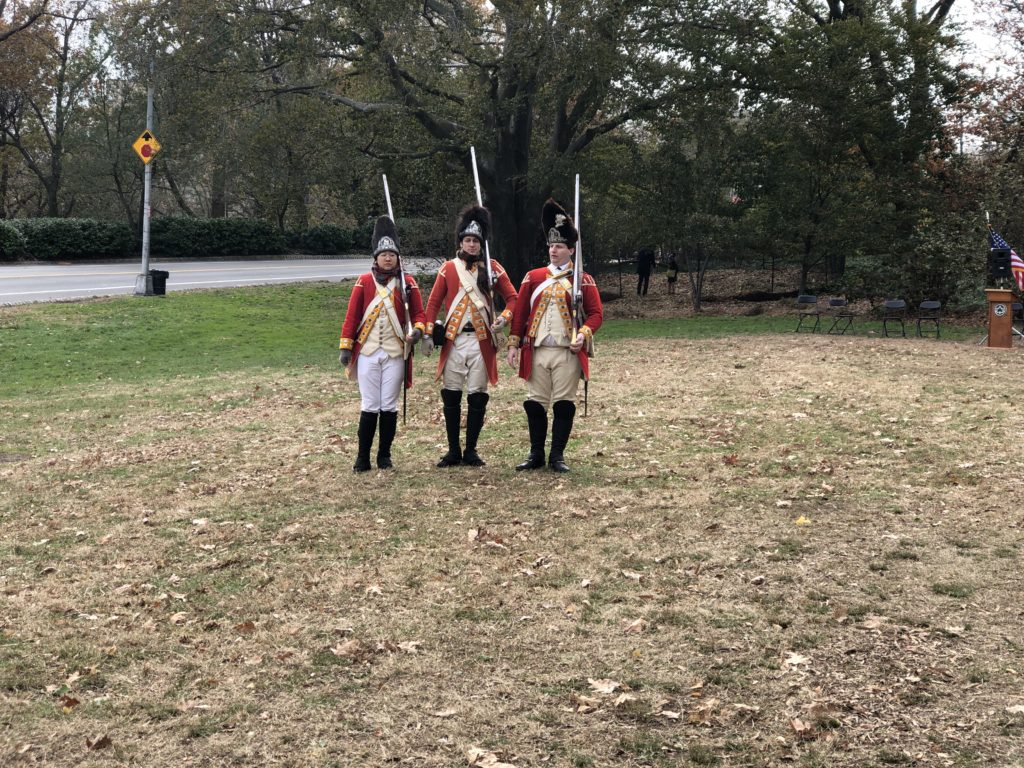
As I looked around, I tried to imagine the landscape largely devoid of human activity; mostly farmland, even Native American country. No Bronx rooftops, or long winding drive with an NYC taxi cab racing behind the Continental Army. Imagining the park without the grooming and care that it gets now, imagining what it would have been like to race up and down hills delivering messages, sighting cannons at incoming enemy troops; being fired upon, and stormed by large men in red coats, with burning matches hanging from their collars, hurling explosives and wielding large, pointy bayonets affixed to their muskets. Despite the small showing, the scene was very vivid to me.
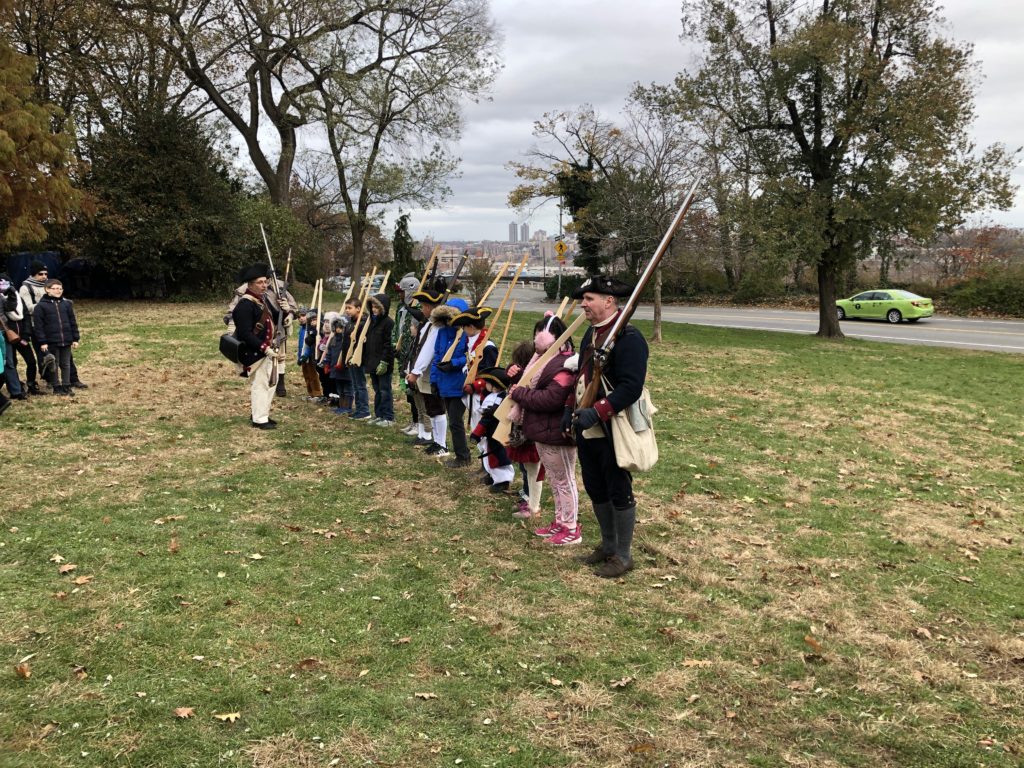
Unfortunately, I gave up on waiting; it was cold, and I had work to do. Still, it was good fun, feeling a part of that history, and a part of the neighborhood. Having just completed reading a biography of George Washington, the battle and its importance in American history was still fresh in mind, and it was a great feeling to experience it, however vicariously, with a simple walk in my neighborhood.
